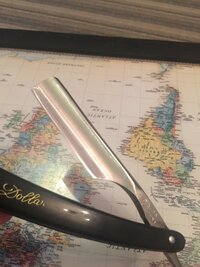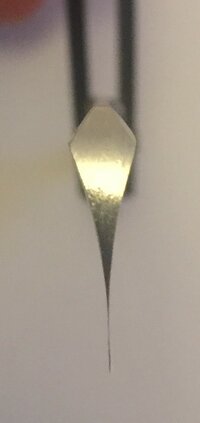rbscebu
Girls call me Makaluod
I am just throwing thoughts around in my mind. If have a SR that I am thinking of modifying the profile. The modification would involve; changing the Dutch (round) point to a Spanish point like the Gold Dollar W59, thinning the spine to take about 1.5° off the bevel angle, and replacing the stabiliser with a thumb notch arrangement.
The blade will be of specially heat treated stainless steel that could easily have its fine gained structure modified if its temperature ever exceeds 200°C. This I don't want to happen.
I was thinking that the best way to do the training of the point and the heel/shoulder would be to grind it underwater. My thinking is this should guarantee that 200°C would never be reached.
I know the normal suggestion is to just grind for a second or two and then let the steel cool, but I would like to try a different approach. My main concern is that, being so thin, any grinding in air near the edge could easily and almost instantly get the steel temperature there to over 200°C.
I could do this grinding using a Dremel with flexible extension. What do you think?
The blade will be of specially heat treated stainless steel that could easily have its fine gained structure modified if its temperature ever exceeds 200°C. This I don't want to happen.
I was thinking that the best way to do the training of the point and the heel/shoulder would be to grind it underwater. My thinking is this should guarantee that 200°C would never be reached.
I know the normal suggestion is to just grind for a second or two and then let the steel cool, but I would like to try a different approach. My main concern is that, being so thin, any grinding in air near the edge could easily and almost instantly get the steel temperature there to over 200°C.
I could do this grinding using a Dremel with flexible extension. What do you think?




